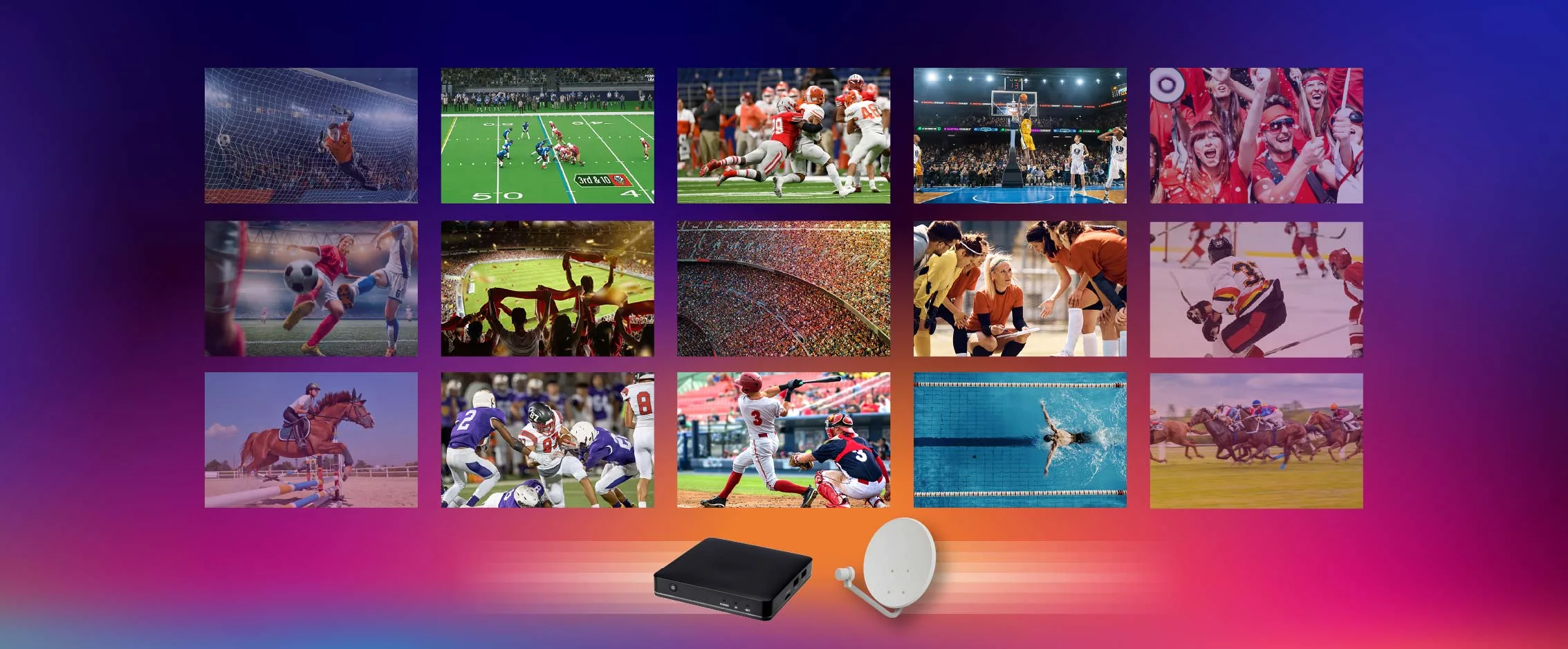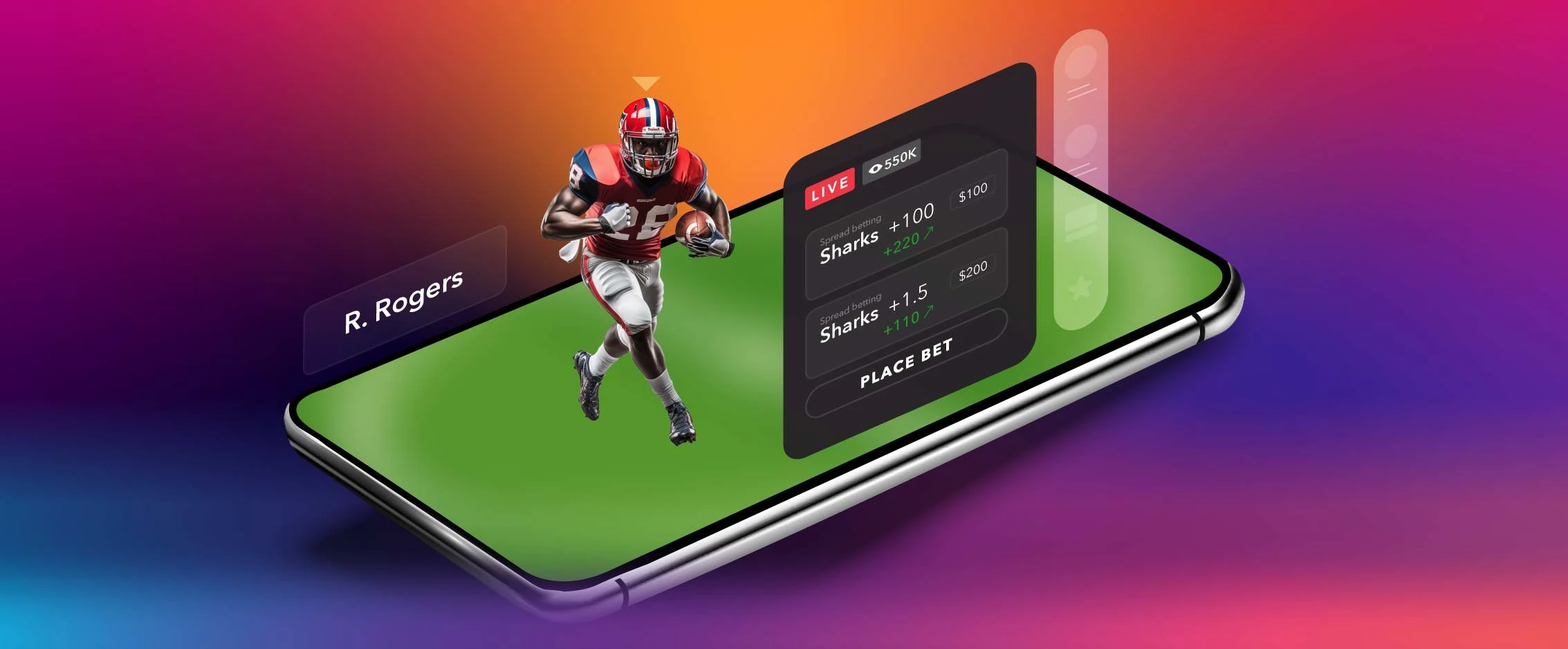The importance of live streams in retail betting
While online betting continues to grow, retail betting remains a strong part of the industry, thanks to its unique atmosphere, social interaction, and in-person experience. According to a 2023 survey by the Gambling Commission, 34% of UK bettors still choose retail venues for their bets.
Inside these retail betting shops, a set number of screens typically display live events such as sports matches, horse racing, greyhound racing, and more. The quality and reliability of these live streams are critical. Bettors want to follow every moment of the action, especially when they’ve placed a wager. Any disruption, like a frozen screen or blackout, can quickly lead to frustration. These interruptions not only affect the betting experience but can also damage the shop’s reputation. If the stream quality is consistently poor, customers may choose to visit other betting shops that offer more stable and engaging live streaming, ultimately impacting customer loyalty and revenue.
Today, betting operators are focusing on attracting more customers to their shops, increasing the frequency of visits, and keeping them engaged by offering more opportunities to watch and bet on live sports. Live streaming plays a central role in this effort, offering real-time access to sports events that enhance both viewing and betting opportunities.
Pre-internet era: satellite broadcasting for betting shops
In the pre-internet era, betting shops relied heavily on satellite technology to stream live sports feeds. During that time, terrestrial broadcasting and early cable systems offered limited reach, bandwidth, and reliability. They especially struggled to transmit real-time content to multiple locations. Internet infrastructure was either nonexistent or too slow and unstable to support live video streaming. Satellite broadcasting emerged as a superior solution because it offered wide geographic coverage, dedicated transmission channels, and low latency, ensuring that betting shops could receive synchronized, high-quality live footage of sports events. Satellite feeds also provided a secure and centralized way to distribute content, making them the most practical and efficient option for the industry at the time.
The way forward: Satellite broadcasting vs. OTT streaming
Fast forward to today, OTT (Over-the-Top) streaming has advanced significantly, offering new possibilities for content delivery in retail betting environments. For betting shop operators still relying on satellite broadcasting, now is a crucial time to evaluate which streaming technology to adopt going forward.
To make an informed decision, it’s important to first understand how each system works.
Satellite broadcasting:
Satellite broadcasting transmits live video signals from a broadcast center. The central source encodes the video content into a digital signal, which is then modulated and amplified for transmission to orbiting satellites, which then relay the signals back to satellite dishes installed at betting shops. These dishes receive the signal and pass it to decoders that display the content on screens. The entire process relies on a direct line of communication between the broadcaster, the satellite, and the receiving equipment.
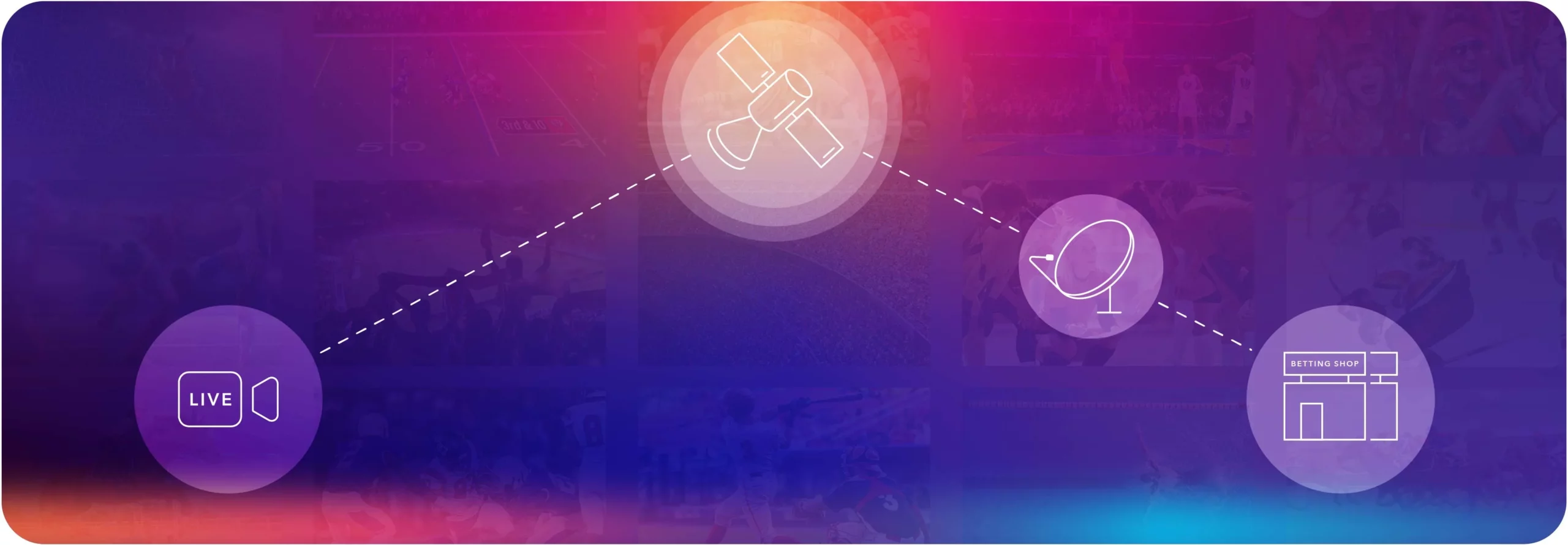
OTT streaming:
OTT streaming delivers video content over the internet, starting with a central server that encodes and transcodes the live feed into multiple bitrates for adaptive bitrate streaming (ABR). These video segments are distributed via a Content Delivery Network (CDN), which ensures fast and reliable delivery to betting shops. Set-top boxes or other connected devices fetch and decode the stream, with the video player dynamically adjusting quality based on network conditions to ensure smooth real-time playback.
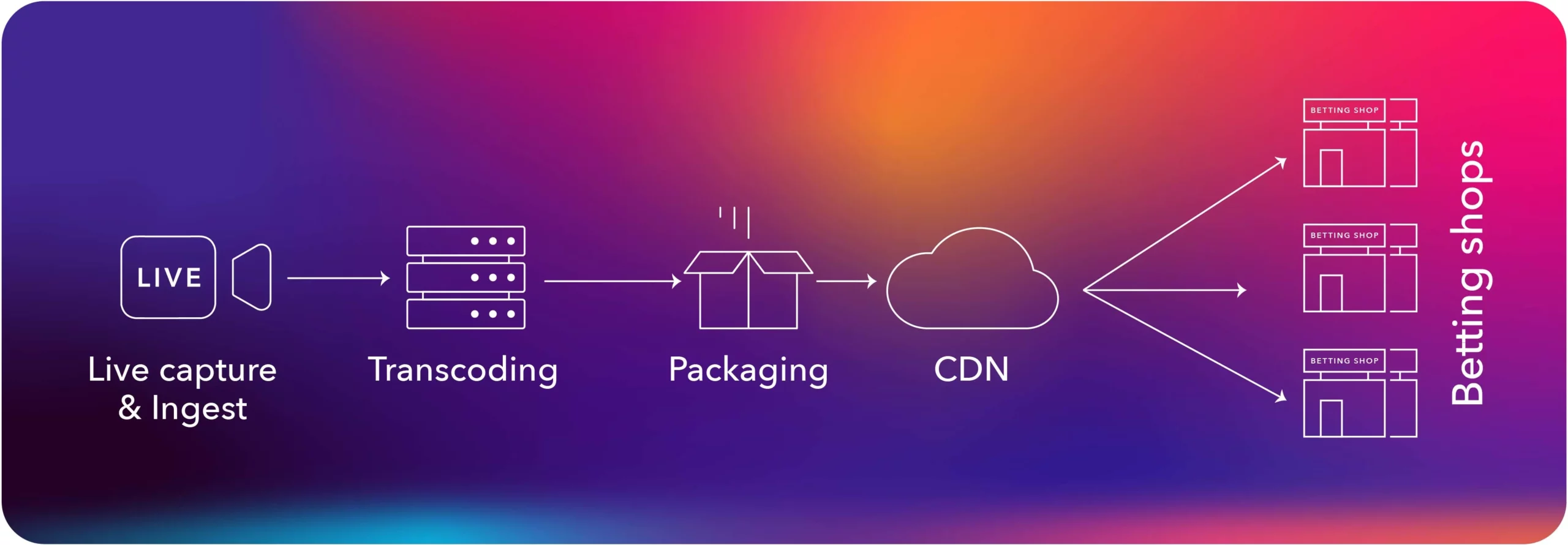
Now that we’ve understood how they work differently, let’s explore their differences from a few key angles.
Infrastructure and maintenance costs
Let’s start by looking at the infrastructure and maintenance costs of the two streaming solutions.
Satellite broadcasting requires significant upfront investment. Each betting shop must install a satellite dish on the roof. This can involve additional costs such as rooftop rental fees in certain locations. The setup also includes satellite decoders, which require regular maintenance. If something goes wrong, a technician typically needs to visit the retail shop to troubleshoot the issue. Over time, the hardware will age and needs to be replaced, adding to long-term operational costs.
In contrast, OTT streaming offers a simpler, more cost-effective setup with lower initial investment. Advanced set-top boxes like the Amino STB, combined with Orchestrate and Dolby OptiView Streaming, enable full remote management. This eliminates the need for on-site visits to configure devices or update firmware. It means many technical issues can be resolved remotely, significantly reducing maintenance time and costs. The system is also easier to scale and update, making it a more flexible option for betting operators looking to modernize.

Stream stability and quality
As we talked about the importance of the stream stability and quality above, let’s take a look at how satellite broadcasting and OTT streaming handle stream delivery under different conditions.
Satellite broadcasting relies on signals transmitted from orbiting satellites to dishes installed at each betting shop. While generally stable, this method is susceptible to weather-related disruptions. Heavy rain, snow, or storms can weaken the signal. This is a phenomenon known as rain fade. Snow buildup on the dish or strong winds can also interfere with reception or misalign the equipment. These interruptions may result in pixelation, freezing, or complete signal loss of the live stream. This can frustrate customers and disrupt the betting experience.
On the other hand, OTT streaming is not affected by weather conditions, but fluctuation network conditions could impact delivery. Modern OTT streaming solutions, such as Dolby OptiView Streaming, are designed to maintain consistent stream quality even during network fluctuations. With built-in remote monitoring and adaptive bitrate (ABR) streaming, it can automatically adjust the stream to ensure smooth playback.
Stream latency and bettor experience
Latency, the delay between the live event and what appears on screen, is crucial for bettor experience during live events, especially in live sports betting. When latency is high, bettors may see the action several seconds after it actually happens. This can lead to unfair betting conditions and reduced engagement. In contrast, lower latency ensures that all viewers are seeing the game in near real-time, creating a more immersive and trustworthy environment for placing bets.
Satellite broadcasting typically has an end-to-end latency of around 4 to 5 seconds. This delay results from several processing stages, including video encoding, conversion to the DVB-S (Digital Video Broadcasting – Satellite) format, signal transmission, and final decoding at the receiver end. While this may be acceptable for general viewing, it could be optimized for betting scenarios.
Today, OTT streaming can achieve end-to-end latency as low as 1 second or lower. This is thanks to internet-based delivery and optimized streaming protocols. This near real-time performance allows bettors to react to live events more accurately and fairly. Lower latency also extends the betting window, giving operators more opportunities to offer in-play bets and drive revenue.
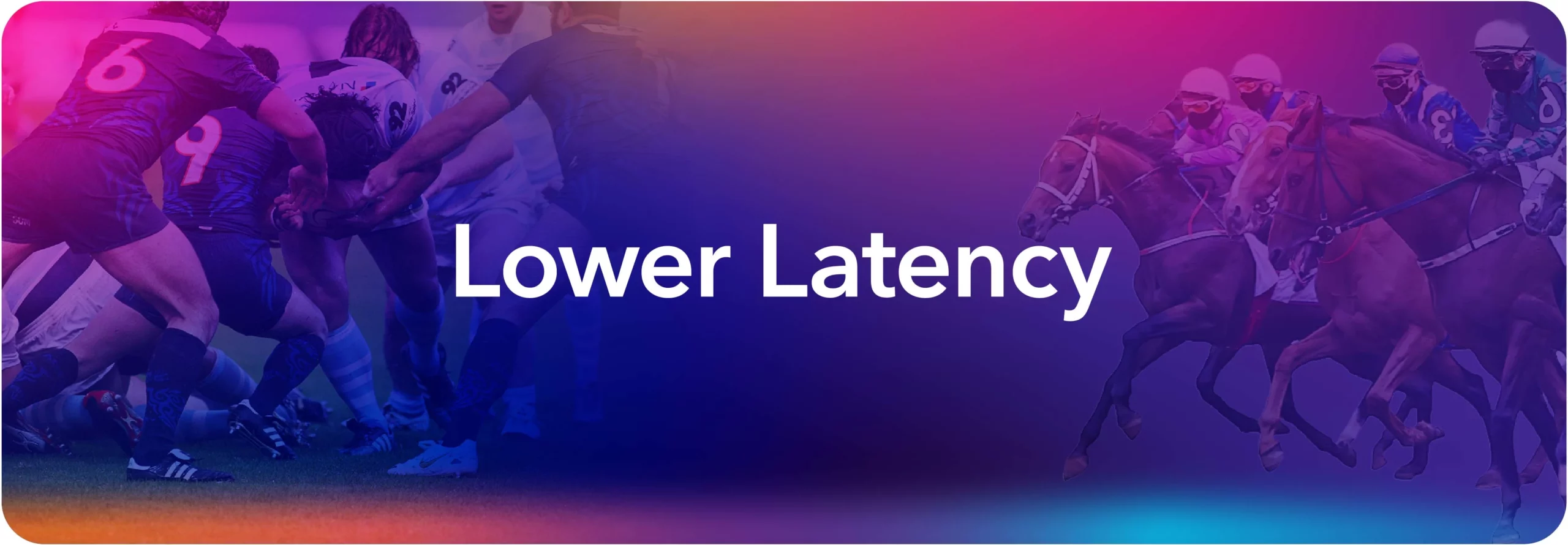
Content localization and flexibility
Beyond stream quality and latency, content availability plays a key role in the retail betting experience. With countless games and matches happening daily, bettors often have specific preferences. Naturally, bettors are more likely to visit shops that offer the games and matches they care about, whether it’s a major international event or a local favorite.
In a satellite broadcasting setup, the available channels are typically fixed. Adding or removing channels is uncommon and often requires technical adjustments and additional costs. If a new or trending match isn’t part of the existing satellite feed, offering it on short notice becomes difficult and expensive. This makes it impractical for most betting shops. As a result, there is a lack of variety beyond tier 1 sports and operators have limited control over what the stores are showing.
In contrast, OTT streaming offers far greater flexibility. Operators can remotely control which video channel plays on which TV in which shop. This allows them to tailor content to specific regions or even individual locations. For example, Paddy Power offers different content in its shops in Ireland compared to those in the UK.
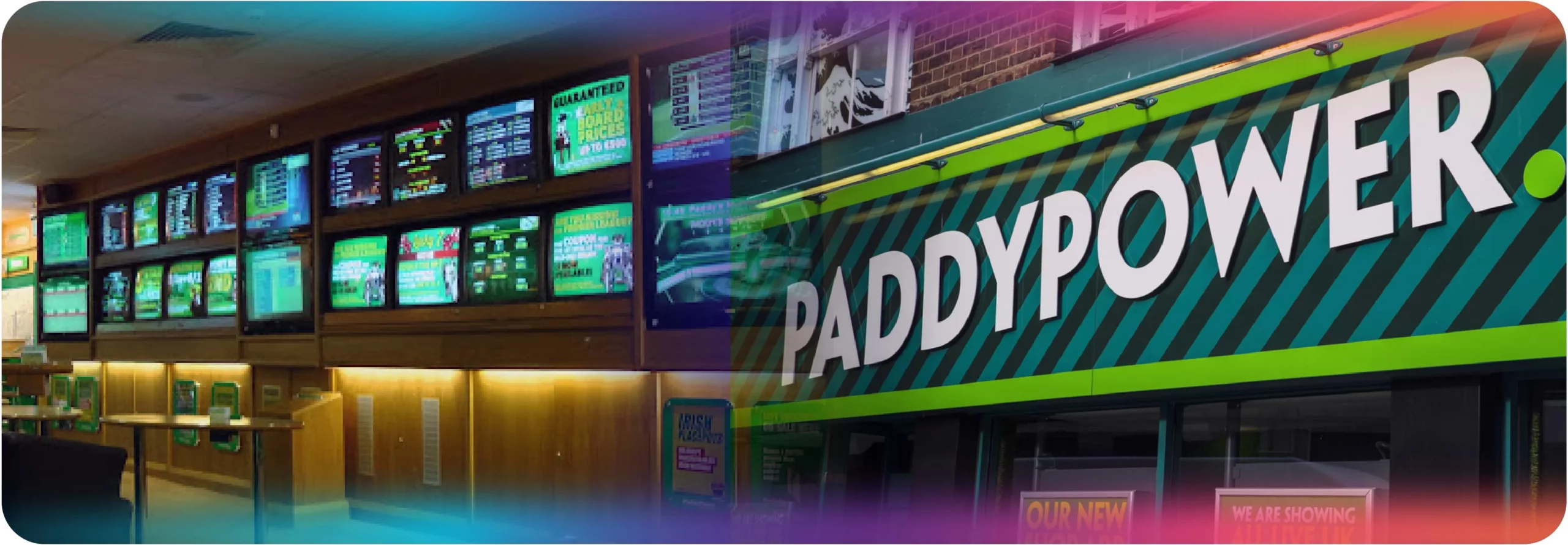
If a popular game arises unexpectedly, operators can quickly set up a temporary or pop-up channel to stream that specific content. Solutions like Dolby OptiView Streaming make it easy to manage and adapt stream content remotely in real time, allowing betting operators to respond to demand in real time. This delivers an optimal experience for customers actively betting on tier 2 and tier 3 sports, ensuring they have timely access to relevant live content.
Additionally, when a betting shop wants to stream more games than there are available TV screens, OTT streaming enables screen-splitting. This allows a single screen to show multiple live games simultaneously in separate windows. This agility not only improves customer satisfaction but also helps shops stay competitive in a fast-moving market.
Modernizing retail sports betting experience
Retail betting remains a strong and competitive industry despite the growth of online platforms. As technology evolves and customer expectations rise, operators must rethink how to modernise their shops to stay ahead. Adapting technological innovation and building brand loyalty are key to maintaining a competitive edge.
Transitioning from satellite broadcasting to OTT streaming is a future-proof strategy for betting operators. It offers more stable, lower-latency streams and helps reduce operating costs. By using existing internet connections, betting shops can deliver a broader range of high-quality content. This improves customer experience and enables market differentiation.
An OTT solution with set-top boxes allows for fast deployment, simplified management, and quick rollout of new channels. It enhances diagnostics and support, helping technical teams resolve issues efficiently and reducing strain on resources. Scalable across all betting shops, OTT streaming supports localized content and pop-up channels, enabling tailored viewing experiences and rapid response to trending events. These capabilities strengthen customer loyalty, improve engagement, and drive long-term growth for retail betting businesses.



